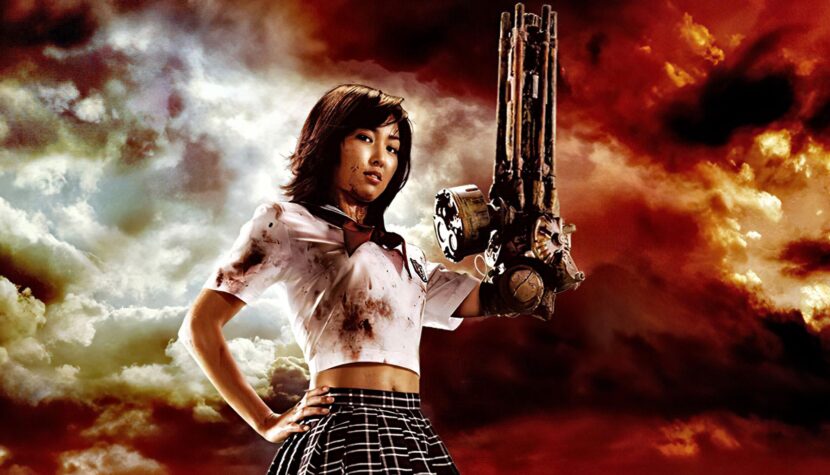THE MACHINE GIRL. Unbridled entertainment with hectoliters of fake blood

The success of Death Proof and Planet Terror, just like with Braindead and Evil Dead II, led to an increased interest in cinephiles for kitschy action films. One of such productions is Kataude mashin gâru, better known as Machine Girl. In the summer of 2008, the trailer for this production captured the hearts of YouTube users – 1.8 million people watched it, a result comparable to summer blockbusters. Most YouTube users probably didn’t suspect that it wasn’t a “fake trailer” but a preview of a real production.

Ami is an ordinary, peace-loving Japanese high school girl. Well, not entirely ordinary – her parents committed suicide due to murder accusations, and Ami herself has to take care of her younger brother. Everything changes when her brother and his friend are killed by members of the Yakuza ninja family. Following the trail of the crime, she discovers that it is backed by the descendant of the famous Hanzo Hattori clan. During a confrontation with the criminals, she is severely mutilated and miraculously escapes the battlefield. She decides to abandon pacifist ideals and vows strict revenge. She ends up at the apartment of Takeshi’s parents – the boy killed with her brother. It turns out that his father is a great mechanic who can replace Ami’s severed arm with a machine gun. Moreover, his mother is well-trained in martial arts and joins the revenge prepared by the teenager. The further plot revolves around the uncompromising extermination of hordes of enemy ninjas.
Even without the awareness that this film was financed by American producers and had its premiere (direct-to-video, of course) in the USA two months earlier than in Japan, it is clearly aimed primarily at Western viewers. We have a whole range of things that an average American associates with Japan – shurikens, sushi, katanas, ninjas, Yakuza. On the other hand, Western influences are also present – the minigun attached in place of the hand is a clear reference to Planet Terror, while naming the Yakuza family Hattori Hanzo is an equally subtle nod to Kill Bill. Thanks to this, a mixture was created that is Japanese enough for the average viewer from the Land of the Rising Sun to watch it, and at the same time does not repel European and American viewers with eccentricities.
The actors didn’t have to exert themselves too much in Machine Girl. The main character, like most actors in this film, is a debutant. However, the most surprising role is played by Asami – this twenty-two-year-old actress from Japanese adult films plays Miki – the mother of the teenage Takeshi!

As for the technical side, it does not differ much from the standards of such productions. Most of the crew are debutants or people with little film experience, which is evident. Artificial and not very realistic blood flows thickly between clumsily animated instruments of doom, nondescript decorations, and costumes literally taken from a Russian market. Especially absurd and funny is the fact that you can clearly see the real hand of the main character hidden under her blouse. It is simply wider on one side of the torso than on the other! Speaking of tools of doom, their range is truly wide. In addition to “standard” equipment such as rifles, chainsaws, katanas, and shurikens, we also have inventions like the flying head chopper – poetically called the “flying guillotine,” or (attention!) – my favorite: the “drill bra” – simply put, a mechanical bra with drills.
The film definitely does not present any deeper values. Fans of engaged cinema and those who are simply annoyed by shallow action films will definitely not like this position. However, fans of early Raimi and Jackson films, or Rodriguez’s Planet Terror, can and should watch this film. It will provide them with an hour and a half of unrestrained entertainment with liters of fake blood and flying limbs.”

